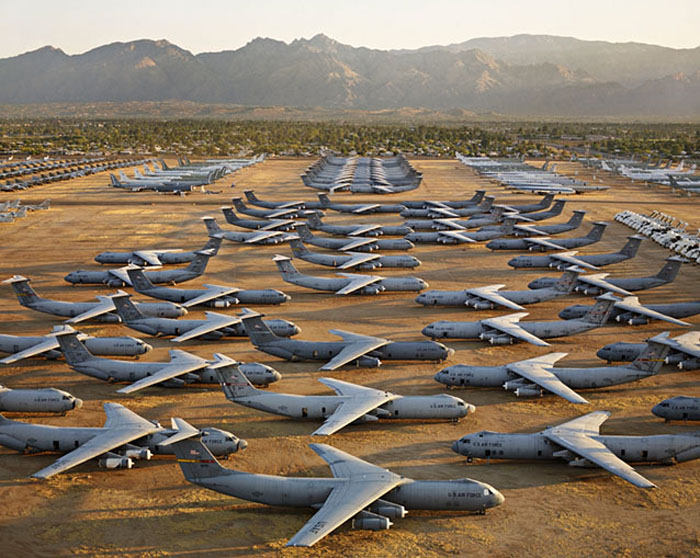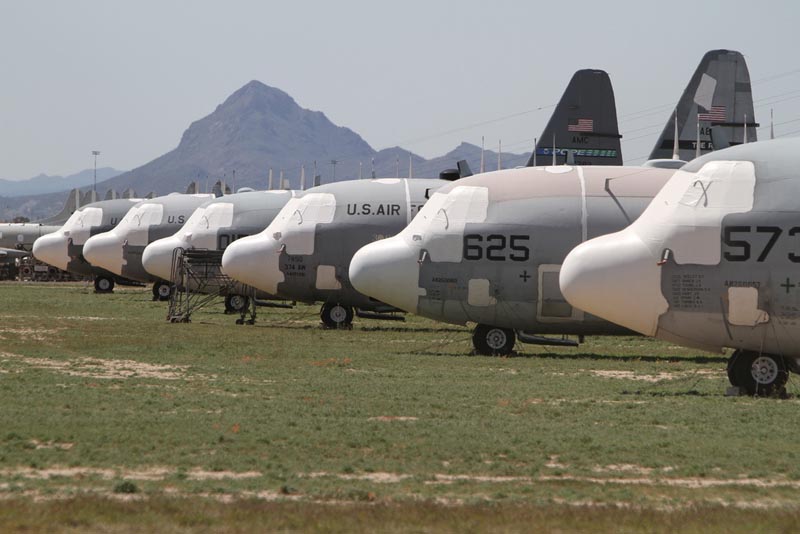It is quite common for aging elephants to wander off and select their own place of dying. This is some sort of an elephant graveyard. The concept is similar in south central Tucson, which lies at a crucial part of the Sonoran Desert. Here, old airplanes come to breathe their last. This is known as airport graveyard.
The air force base of Davis-Monthan lies within Interstate 10’s sight. It is home to a storage facility, known as boneyard by the locals. The facility has a unique function. It serves as a holding place for preservation of airplanes till their fate has been sealed.

The Tucson region is an ideal place for an airplane graveyard. The climate is dry and clear. The atmosphere is completely smog free. This helps in preventing corrosion. The soil of the airplane graveyard is alkaline in nature. The soil is extremely firm, making towing and parking on the surface an easy task.
These airplanes were, at one time, war horses for the country’s military. They have been mothballed officially, by forcing them into retirement. The windows and engines of the airplanes are covered with tape for protection against the sand and dirt of the desert. A well-sealed plane may be stored for many years at the airplane graveyard because the winters are moderate and the humidity is low.
Airplane graveyard is much more than a mere fence around carcasses of airplanes and huge piles of metal that is scrapped. Several airplane parts worth millions of US dollars have been salvaged. Many airplanes sold to other countries may utilize these spare parts.
Some planes need to be mothballed on a temporary basis. They undergo a meticulous process before they are exposed to the airplane graveyard. The planes undergo inspection on arrival. Heavy oil is poured into the fuel tanks. This also serves as protection for the different parts of the engine. Spraylat has a latex base. This substance seals engine intakes and canopies.

Spraylat’s top layer is white in color. This reflects sufficient solar heat to keep the interior of the plane and the outside air to be at similar temperatures. The planes interior could heat nearly up to 200 degrees Fahrenheit without the use of Spraylat, especially on hot, summer days. With the help of these coatings, the vulnerable parts of a plane are protected from dust, wind, nesting animals, and sun. Each plane is checked every four years at an open hangar.


Comments